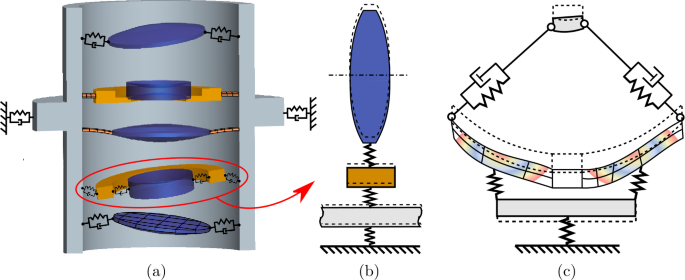
To determine the delay of the cochlear amplifier, one must devise a way to locally stimulate the basilar membrane when the active process is functional. In this work, we investigated the time course of the active process in the cochlea through a set of experiments and a mathematical model that includes active processes. Because outer hair cells can generate forces at sound frequencies up to 100 kHz 20, 21, this local active process is commonly thought to be operational within microseconds. These forces are assumed to modulate the sound-evoked motion of each individual segment of the cochlear partition. More sophisticated mathematical models 7, 8, 9, 10 include the fundamental hypothesis that frequency analysis and sensitivity is enhanced by mechanical forces generated by the outer hair cells 5, 11, 12, 13, 14, 15, 16, 17, 18, 19.
#Motion pulse vibrates ticking optical pictures series
The classical model idealization of the cochlea is as a series of damped resonators, whose resonant frequencies vary along the cochlear partition and are coupled mainly through the inner ear fluids 1, 6. As sound-induced vibration propagates along the basilar membrane, it forms a peak at a location that depends on the health of the cochlea as well as the frequency and amplitude of the stimulus.

The mechanical and biophysical mechanisms that underlie the remarkable frequency resolving capacity and sensitivity of the auditory system remain incompletely described 5. As a result, humans can perceive very small frequency changes, while retaining a sensitivity limited only by the thermal noise of the hair cell transduction 3, 4. The cochlea can therefore be regarded as a mechanical frequency analyzer that decomposes the acoustical stimulus into its component frequencies. Depending on the frequencies of the sound that impinges on the eardrum, these waves peak at different locations along the length of the cochlea 2. These cells are stimulated by sound-evoked waves that travel along the basilar membrane 1. Speech, music and other sounds can be perceived after the excitation of auditory sensory hair cells. A physiologically-based mathematical model shows that such waves engage the active process, enhancing hearing sensitivity. This shows that the active process is neither local nor instantaneous, but requires mechanical waves traveling from the cochlear base toward its apex.

The delayed response was identical to movements evoked by click-like sounds. Light pulses caused intense and highly damped mechanical responses followed by traveling waves that developed with considerable delay. To test these fundamental precepts, we developed a method for focally stimulating the living hearing organ with light. This process is thought to be local, with each section of the hearing organ capable of amplifying sound-evoked movement and nearly instantaneous, since amplification can work for sounds at frequencies up to 100 kHz in some species. The exceptional sensitivity of mammalian hearing organs is attributed to an active process, where force produced by sensory cells boost sound-induced vibrations, making soft sounds audible.


 0 kommentar(er)
0 kommentar(er)
